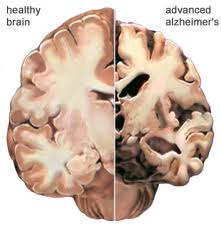Featured
This week’s featured posts.
This week’s featured posts.
 When our mass media evolved to reach of millions rather than thousands, social scientists created new theories. How would the media influence people’s behavior and attitudes? Sociologists started with the “hypodermic needle” model of influence — media “injected” opinions, beliefs, and attitudes into passive audiences. Recipients had no control. Once they were injected, their opinions and beliefs started to sway. The more they were injected, the more likely they were to move in the specified direction. Pundits feared that, given enough exposure to propaganda, God-fearing, freedom-loving Americans could be converted to communist atheists.
When our mass media evolved to reach of millions rather than thousands, social scientists created new theories. How would the media influence people’s behavior and attitudes? Sociologists started with the “hypodermic needle” model of influence — media “injected” opinions, beliefs, and attitudes into passive audiences. Recipients had no control. Once they were injected, their opinions and beliefs started to sway. The more they were injected, the more likely they were to move in the specified direction. Pundits feared that, given enough exposure to propaganda, God-fearing, freedom-loving Americans could be converted to communist atheists.
If the hypodermic model were accurate, money really would make a difference in presidential elections. Whichever side could run more ads and “inject” more viewers would win. Spend more money, win more elections.
Our understanding of mass media has evolved, however. We now think of it as a two-step model. First, the media influence (but don’t “inject”) opinion leaders in a given social circle. Second, the opinion leaders influence other people in the group. Perhaps fortunately, opinion leaders have only limited spheres of influence. For instance, my friends think I’m an opinion leader on computing technology. They ask my opinion. On the other hand, they never ask my opinion on gardening.
Political campaigners (and advertisers) want desperately to reach opinion leaders. It’s not easy, however, because a leader on one topic is not a leader on another. Even someone who is well informed may not be influential. I have friends who are dedicated leftists and others who are confirmed rightists. They read a lot, they seem well informed, and they’re very sure of their own opinions. But, they always offer the same pat solutions. I don’t trust either of them to influence my opinion. They’re not thinkers; they’re believers.
If politicians can’t count on their true believers to influence others voters’ opinions, what can they do? How do they target their messages? Fortunately or unfortunately, they can’t target very well. So they just carpet bomb. They’re using a hypodermic model in a two-step world. It doesn’t work. It never did. What a waste of money.
In the Citizens United case in 2010, the Supreme Court effectively removed all constraints on spending for political advertising. The Supremes argued — in a 5-4 decision – that the First Amendment prohibits the government from restricting free speech or, by extension,  from spending money to speak freely. For all practical purposes, this means that corporations, unions, and just plain rich people can spend as much as they want to promote a candidate or a cause.
from spending money to speak freely. For all practical purposes, this means that corporations, unions, and just plain rich people can spend as much as they want to promote a candidate or a cause.
As a result, we’ve seen a tidal wave of money — and a few bizarre billionaires — injected into this year’s presidential campaign. My question is: does it matter?
I come from the tech world and I can think of many examples where a small, poorly funded company took on a well-entreched giant and ate not only their lunch but also their breakfast and dinner. Think of SUN Micro versus IBM. Or Google versus Microsoft. In the political world, the Arab Spring revolts in Tunisia, Libya, and Egypt suggest that money (and even coercion) can’t stop a good idea once it starts spreading.
I’ve also seen many expensive promotional campaigns that yielded little or nothing. A recent example from the tech world is Nokia’s big push for the Lumia 900 smart phone. A massive promotional campaign yielded minimal sales. (Anybody remember the Lumia 900?) A well-documented example in the political world was George Bush’s big push in 2004/5 to partially privatize Social Security. Bush launched a well-funded, well-coordinated nationwide campaign and spoke on at least 65 occasions to promote the idea. The more he spoke, the less popular the idea became. (I have an article in the works on this topic).
I see a big difference between changing your mind and changing your values. (In fact, this is a major insight of classical rhetoric). I don’t think many people will change their values just because they see a 30-second commercial. An angry commercial may activate people (and that’s important) but I don’t think it will change people. In fact, an angry and cynical ad may push people in the opposite direction. I’ll discuss reasons for this in my next article.
Of course, if I were running a political campaign, I would prefer to have more money than my opponent. But money isn’t everything. For instance, I’ve worked for small companies battling against larger companies for my entire career. I wouldn’t say that all my adventures ended happily but many of them did.
So, will the massive spending in the 2012 election affect the outcome? It’s a grand experiment. One possible — perhaps probable — outcome is that we’ll get to November 7 and find the politicos saying, “Wow, we just spent a massive amount of money and it had no impact whatsoever. There must be a better way to spend our money.” If that happens, the 2016 election will be a lot more pleasant.
(Speaking of 2016, what do you think? Condoleezza versus Hillary?)
How do you evaluate whether a given company (or product) will be successful or not? Clearly, you’ll want to study the business plan,  interview management, talk to customers and competitors, and get an unbiased evaluation of the product. But is that enough? Unfortunately, it’s not — you’re only looking at those things that you can look at. You’re looking at the known knowns but omitting the known unknowns.
interview management, talk to customers and competitors, and get an unbiased evaluation of the product. But is that enough? Unfortunately, it’s not — you’re only looking at those things that you can look at. You’re looking at the known knowns but omitting the known unknowns.
So how do you see what you can’t see? Instead of just looking at the individual case, look also at the category that the case derives from. If you’re evaluating a start-up company, look at all the details of the company. But also look at the category called “start-up companies”. What’s the success rate there? Studying the category won’t always tell you why companies succeed but it will tell you how often they succeed. That can provide you a “base rate” with which to compare your individual case. For a balanced view, always look at the case and the category.
Learn more in the video.
I normally write about topics related to strategy, innovation, branding, and communication. I just spotted an article about new research  on Alzheimer’s, however, and thought I would pass it on. (My Mom had Alzheimer’s so I’m interested). In the latest edition of New Scientist magazine, an article titled “Food For Thought” traces the connection between insulin and Alzheimer’s.
on Alzheimer’s, however, and thought I would pass it on. (My Mom had Alzheimer’s so I’m interested). In the latest edition of New Scientist magazine, an article titled “Food For Thought” traces the connection between insulin and Alzheimer’s.
We’ve known for some time that insulin plays a role in regulating sugars and fats in the body. It turns out that insulin also helps the brain manage its consumption of glucose — and the brain sucks up a lot of glucose. The “Type 3” hypothesis posits that disrupting our insulin management system (as in Type 2 diabetes) can lead to plaques that are typical of Alzheimer’s. If that’s true — and it’s certainly not proven yet — then taking steps to reduce Type 2 diabetes could help reduce future cases of dementia.
You can find the New Scientist article here. I looked up some other references as well. The Journal of Diabetes Science and Technology notes that “there is a rapid growth in the literature pointing toward insulin deficiency and insulin resistance as mediators of … neurodegeneration” and then proceeds to review the literature. The conclusion: “…these studies provide strong evidence in support of the hypothesis that AD represents a form of diabetes mellitus that selectively afflicts the brain.”
An article from Rhode Island Hospital, notes that one of its researchers, Suzanne de la Monte, M.D., “has found a link between brain insulin resistance (diabetes) and two other key mediators of neuronal injury that help Alzheimer’s disease (AD) to propagate.” An article in Emax Health suggests that “Recent research has found that insulin resistance also develops in the brains of patients with Alzheimer’s, which scientists sometimes call “brain diabetes.””
So, what to do? Nothing has been proven so Im not sure that there’s anything specific to do. But the New Scientist article does suggest that regular exercise can reduce the chance of dementia by as much as 40%. So I’m going for a bike ride. Anyone want to come along?
 Our son, Elliot, is an architect living in Brooklyn, where all the cool kids hang out these days. Since Elliot went off to architecture school, I’ve been reading more books on design and, especially, the effects of physical space on human welfare. In other words, how do the places where we work and live affect our mood, creativity, energy, and general attitude towards each other? Then, once we know the answers, how do we design better spaces?
Our son, Elliot, is an architect living in Brooklyn, where all the cool kids hang out these days. Since Elliot went off to architecture school, I’ve been reading more books on design and, especially, the effects of physical space on human welfare. In other words, how do the places where we work and live affect our mood, creativity, energy, and general attitude towards each other? Then, once we know the answers, how do we design better spaces?
One of the better books I’ve been delving into is A Pattern Language, which is often described as a classic in the design literature. Published in 1977, the book describes “an entirely new attitude to architecture and planning.” (It’s available here on Amazon).
On page 115, the authors make a simple but stunning claim: “There is abundant evidence to show that tall buildings make people crazy.” Here are two key passages that explain the claim:
“The strongest evidence comes from D.M. Fanning (“Families in Flats”, British Medical Journal, November 18, 1967, pp. 382 – 86). Fanning shows a direct correlation between incidence of mental disorder and the height of people’s apartments.”
……
“A simple mechanism may explain this: high-rise living takes people away from the ground, and away from the casual everyday society that occurs on the sidewalks and streets and the porches and gardens. It leaves them alone in their apartments. … The forced isolation then causes individual breakdowns.”
The book goes on to cite studies from Canada and Denmark that reach similar conclusions.
So why am I writing about this on a website that normally focuses on persuasive communication? Because Im interested in how our physical environment affects our ability to communicate. I’ve seen any number of business meetings ruined because the physical accommodations inhibited rather than promoted communication. Even so, I still can’t predict with certainty whether a given space will be “good for” or “bad for” communication.
So, I’m posting this more to gather information rather than to disseminate it. What are the characteristics of physical spaces that promote communication? And what characteristics inhibit communication? Please share your thoughts in the “Comments” section. If you can point me to any particular resources, I’ll be sure to review and summarize them in future posts. In the meantime, stay away from tall buildings.